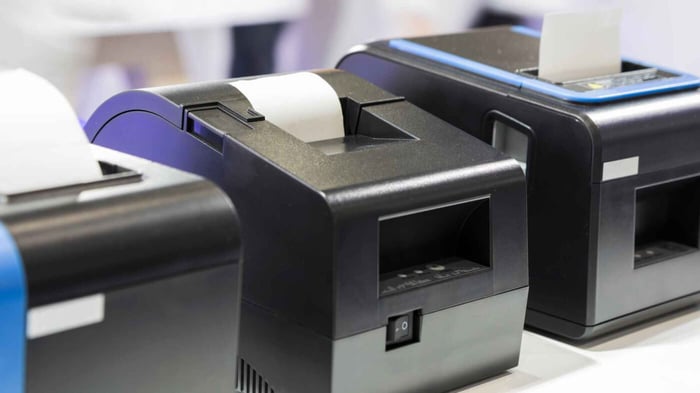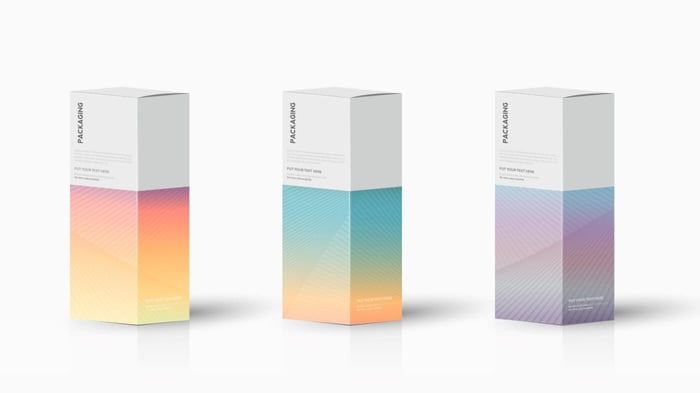In the realm of product creation, the printing process holds equal significance to the design itself. Companies utilizing printing services must possess a solid grasp of various printing technologies to guarantee the optimal choice for their specific requirements. Factors such as printing speed, print run volume, and stringent quality control should be carefully evaluated when collaborating with a printing service provider.
Dive into this informative guide as it unveils the widely used printing types, their applications, and the diverse range of inks employed to deliver stunning results.
Popular Types of Printing
Offset Printing
Offset printing, in essence, involves transferring an inked image from a tailor-made plate to a rubber blanket before imprinting it onto the paper. This technique excels in professional projects demanding large volumes, precise details, and superior color reproduction. Due to its compatibility with high-quality inks and adaptability to ink density, offset printing becomes the ideal choice for print runs surpassing 100,000 units, boasting rapid production times. The ink utilized in this process exhibits a thick consistency, akin to a liquid paste.

Flexographic Printing
Flexographic printing employs a large, flexible plate, cylinder, or sleeve to imprint a design onto the desired material, functioning much like an efficient rubber stamp. Products commonly produced by flexographic printers include film, cellophane, foil, and various label materials. As flexo printer plates necessitate customization for each project, this printing method proves suitable for extensive print runs. However, flexographic printing may not be a financially viable option for smaller-scale print runs.

Digital Printing
Digital printing involves applying toner or liquid ink directly onto the printing material, such as paper. These compact printers boast quick turnarounds and are prevalent in both homes and offices, allowing for effortless single-unit printing. This method also enables users to make last-minute adjustments and experiment with various design variations. Digital printing dries rapidly and offers a budget-friendly solution for small-scale print runs.
UV printing, a popular digital printing variant, uses ultraviolet lights to instantly dry specialty ink upon contact with the material. Given its rapid printing speed, UV printing ink is an excellent choice for high-volume print runs. Laser printing, another digital printing subset, utilizes toner—a fine powder printing agent—instead of ink. The toner fuses onto the paper using heat, resulting in sharp, high-quality prints produced at a swift pace.
The Most Common Issues in Printing
Color Quality
Customers' satisfaction is often compromised when the printed colors deviate from their original expectations. This issue typically arises when a file hasn't been converted from RGB to CMYK. Fundamentally, web design and print design employ distinct color principles: web design relies on the RGB (Red, Green, and Blue) model, while physical print media utilizes CMYK (Cyan, Magenta, Yellow, and Black) colors. As CMYK offers a limited color range, printers may incorporate Orange, Green, and Violet (OGV) inks to achieve a broader spectrum. Although CMYK colors can vary, the use of a Pantone color code guarantees consistent results every time.
Poor Print Resolution
In the context of printing files and images, considering the DPI (Dots Per Inch) is crucial, as it determines the composition of a printed image. PPI (Pixels Per Inch) refers to the number of pixels per inch on a digital screen. Higher DPI values yield better image quality. A standard DPI for printing files is 300, and it's generally advised not to print files with a DPI lower than 150.
Material Quality
Another prevalent issue in the printing industry is the quality of print materials. The choice of paper or substrate can significantly influence the final appearance and durability of a printed product. Subpar materials can lead to problems such as ink bleeding, smudging, or premature fading, which can diminish the overall quality and aesthetic appeal of the finished piece.
Selecting the appropriate material for a specific project requires careful consideration of factors such as weight, texture, and finish. Ensuring that these properties align with the intended purpose and desired outcome of the print job can help prevent common printing issues and enhance the longevity and visual impact of the final product.
The Importance of High-Quality Ink
In the world of printing, ink holds paramount importance, as it profoundly influences the overall appearance and color consistency of printed products. Utilizing high-quality ink ensures uniformity across extensive print runs.
Consistency in both black and colored inks is crucial, as color harmony plays a vital role in brand marketing. For instance, a brand's logo should consistently display the same colors in high-volume printed materials.

Pantone inks are favored for their unwavering color consistency, regardless of ink density. Moreover, ink significantly affects printing speed and the final product's potential applications, such as lamination possibilities for posters or the appearance of window decals after prolonged heat and sunlight exposure. The choice of ink may also determine a product's resistance to scratches, heat, cold, and water.
Temporary tattoos exemplify the importance of ink quality in printed products. Health and safety concerns necessitate the use of high-quality ink for temporary tattoos, which should be devoid of lead and mercury, and easily removable using everyday household items like baby oil. At CustomStickers we only use eco-friendly inks that have the best color in the industry.
Sustainability and the Future of Printing Technology
As sustainability becomes increasingly vital in the future of printing technology, examining the environmental impact of various inks is essential. Half a century ago, petroleum-based inks gained popularity for their quick-drying properties and cost-effectiveness. However, these inks, derived from a non-renewable resource, are toxic and notorious for their detrimental environmental consequences. During the drying process, petroleum-based inks release Volatile Organic Compounds (VOCs), which significantly contribute to smog and air pollution when present in commercial and consumer products.






